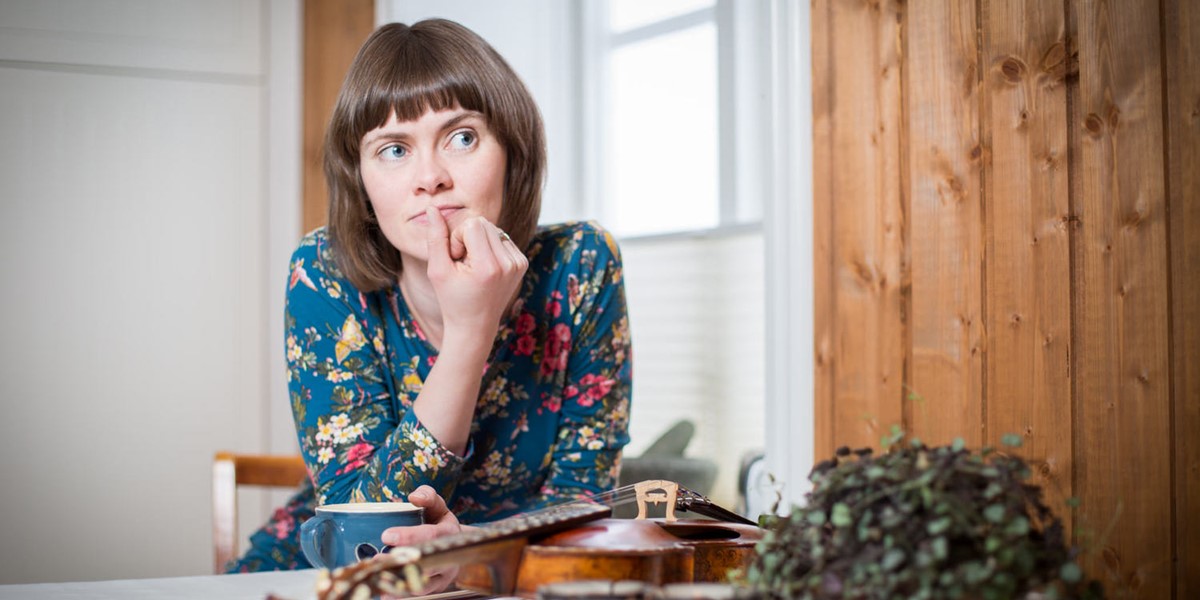Tuesday, January 18, 2022
“I met a Hardanger fiddler who said if you give me your fiddle, I'll give you my farm” | Gro Marie Svidal
Heiress to a piece of Norwegian musical history, Gro Marie Svidal talks about the allure of her unique Hardanger inheritance

©Martin Hugne
Gro Marie Svidal is one of Norway’s top Hardanger fiddler players. And the instrument she ‘inherited’ is a very special one, made by Erik Jonsson Helland (1816-1868), one of Norway’s leading makers.
“I was 16 years old and in my parents living room playing my fiddle. Suddenly the phone rang and my father was talking for a while. When he came back he said that he’d spoken to a relative who’d heard me playing on the radio. He was calling to check if it was really me. And he said he had a fiddle he wanted me to have. We didn’t know at that point what kind of fiddle it was.”
Just as there was a dynasty of classical violin makers in Cremona, Italy, there was a dynasty of Hardanger fiddle makers in Telemark in south-eastern Norway. Helland’s instruments are unique in that he increased the fiddle’s size, making it closer to a normal violin, and Svidal’s fiddle is actually larger than most. Helland liked to experiment. “Later that summer I played the fiddle and I really liked it,” she explains. “My teacher confirmed it was a great instrument and other fiddlers started to talk about it. I once met a Hardanger fiddler who said if you give me your fiddle, I will give you my farm.”
Gro Marie Svidal’s last album, Eilov (reviewed in the December 2016 issue, #123), is a suite for unaccompanied Hardanger fiddle, but it sounds magisterial. ‘The communicative power of the instrument itself shines through everything here,’ said our Songlines review. She employs three different instruments on the record, with eight out of 16 tracks featuring her historic Helland instrument. It opens with the stately but rhythmic ‘Håstabøen’, featuring a gloriously rich sound from the Hardanger and the acoustic space in which it was recorded. “Its sound is warm and has got everything, from the bright to the dark,” she says. “Slowly I realised what I had received and what a treasure it was. But it was not love at first sight, you have to grow into it, like a marriage.”
The Hardanger fiddle does indeed have a special sound. It has sympathetic strings (five on Svidal’s instrument), which create an acoustic aura around the notes and make the tone so much fuller. There’s a debate whether these additional strings might have heralded from the European viola d’amore or from somewhere further east. But the Hardanger fiddle is certainly one of the treasures of European music.
Svidal began playing because her older sister, then aged seven, wanted to join the local Hardanger fiddle club. She begged to go too, and though Svidal was only five (the minimum age requirement was seven), she got in. That same enthusiasm led to her playing on the radio at 16 and winning the Landskappleiken, the main competition for folk players, in 2014. “I always want to give something to the audience by going deep into people’s emotions. I try to do that by diving into myself and see how I react to music – both my own and that of other players. I try to melt this into my way of playing. I also have a great fascination with dance. I love to dance myself and that colours my music. It’s a relationship between me, the music and the instrument. Sometimes the fiddle teaches me and sometimes I command it to do things.”
Svidal is now on a three-year research project into improvisation in Hardanger fiddle music at the Norwegian Academy of Music. But none of this may have happened without the giving of that auspicious gift many years ago.
This interview originally appeared in the December 2021 issue of Songlines magazine. Never miss an issue – subscribe today

